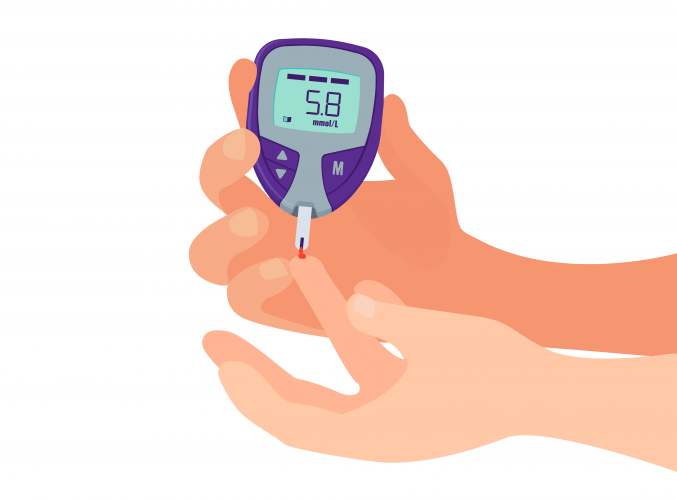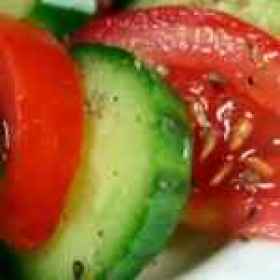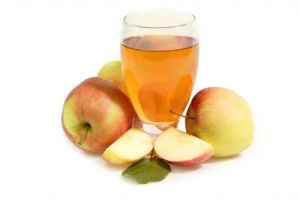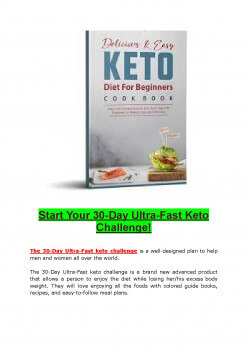Pre, During and Post Performance Nutrition in Sports - Pdf Slider

When it comes to nurturing the potential of young athletes, understanding their distinct nutritional needs is paramount. Competitive sports demand a different level of sustenance than sedentary activities, requiring a focus on fueling the body effectively before, during, and after physical exertion.
In this comprehensive guide, we delve into the critical concepts of athletic nutrition, exploring the role of carbohydrates, the significance of proper hydration, and strategic meal planning to ensure peak performance.
Setting the Foundation: Prior to Training or Competition
The journey towards a successful athletic performance begins with the right preparation. Before embarking on a training session or competition, it's crucial to provide sustenance that imparts sustainable energy without causing hunger or dehydration.
A young athlete's total diet during these times should consist of roughly 45–65% carbohydrates, the body's primary fuel source. Along with these carbohydrates, you should drink fluids that not only hydrate your body but also aid in maintaining your electrolyte balance. The best choices are water and sports drinks with the required electrolytes and a carbohydrate content of 6-8%.
Young athletes should be aware that consuming energy drinks and other caffeinated beverages can have negative effects on their performance and general well-being.
Three to Four Hours Before: The Balancing Act
In the hours before a training session or competition, finding the right balance is crucial. The ideal meal composition can be determined through experimentation during training because every young athlete's body reacts to food differently. Three to four hours prior to physical activity, a balanced meal with a balance of carbohydrates, fiber, protein, and healthy fats is typically advised. This guarantees a steady release of energy and lowers the chance of experiencing stomach discomfort.
Options such as multigrain sandwiches with lean meat, complex carbohydrate-rich meals like spaghetti with vegetables, or nutrient-dense choices like oatmeal with fruits, yogurt, and nuts offer a variety of sources of sustained energy. Smoothies, both hydrating and nourishing, present an excellent pre-game choice.
As young athletes stride towards excellence, their journey is supported by strategic nutrition and top-tier gear. The synergy of performance-oriented meals and resources like Sun and Sand Sports Coupon Codes ensures both their bodies and equipment are finely tuned for triumph.
One to Two Hours Before: Fine-Tuning the Approach
As the performance draws near, adjustments in meal composition become crucial. Young athletes should experiment to determine the right foods and quantities their bodies can comfortably handle one to two hours prior to exercise. Snacks featuring primarily carbohydrates, limited fiber, and moderate protein and fat are preferable during this timeframe. Hydration remains paramount, with water and carbohydrate-containing sports drinks being the best options.
Examples of suitable pre-performance snacks include granola bars with dried fruit and nuts, bananas with almond butter, and crackers paired with cheese.
Right Before The Final Touches
In the moments before engaging in sports, a last-minute carbohydrate boost combined with hydration primes the body for peak performance. Opt for easily digestible options like a few bites of banana, low-fiber crackers, or diluted fruit juices. A sports drink can also serve this purpose effectively. At this stage, steer clear of protein, fiber, and fat to avoid potential stomach discomfort.
During Training or Competition: Staying in the Zone
Sustaining peak performance during training or competition hinges on maintaining proper hydration. For activities lasting less than an hour, water should suffice. However, in situations involving intense sweating, especially in hot and humid conditions, a carbohydrate-containing sports drink becomes necessary to replenish lost fluids and electrolytes.
For extended activities exceeding an hour, a combination of water and sports drinks is recommended. In instances of consecutive games, young athletes benefit from consuming carbohydrate-rich snacks, like fruit, crackers, and granola bars, between matches. Ensuring a steady intake of fluids during these periods is essential to prevent dehydration and fatigue.
After Training or Competition: Recovery and Nourishment
Long-term athletic development requires recovery after exercise. The focus shifts to promoting muscle tissue repair and replenishing muscle carbohydrate stores after an hour of work. A protein- and carbohydrate-rich snack is therefore required.
In a period of two hours, take a healthy meal of fruits vegetables, dairy products, and whole grains.
Post-Performance Recovery Strategies: Restoring and Rejuvenating
After the adrenaline has subsided and the competition dust settles, it's crucial to initiate post-performance recovery strategies. Rest and recuperation are vital, allowing young athletes to restore their energy levels and rejuvenate fatigued muscles. Adequate sleep, gentle stretching, and perhaps a soothing ice bath can aid in reducing muscle soreness and expediting the healing process. Additionally, considering the right post-performance nutrition with protein-rich meals and adequate hydration is essential to replenish glycogen stores and support muscle repair, ensuring that young athletes bounce back stronger for their next challenge.
Fine-Tuning the Nutrition Plan: Continuous Evaluation and Adaptation
The journey of optimizing athletic nutrition is an evolving process. It's imperative to continually evaluate and adapt the nutrition plan based on performance feedback and changing physical needs. Young athletes should work closely with nutritionists or dietitians to fine-tune their meal plans, ensuring they align with their training goals, growth spurts, and overall health. Regular assessments of the impact of different foods on performance and overall well-being will aid in making informed decisions, helping young athletes reach their peak potential through a tailored and evolving nutritional strategy.
Special Considerations for Young Athletes: Addressing Growth and Development
Young athletes undergo crucial phases of growth and development, necessitating specialized attention to their nutritional needs. This stage demands a balance between providing adequate energy for physical activity and ensuring proper nutrients for growth. Nutrition plans should account for essential vitamins, minerals, and proteins crucial for bone development, muscle growth, and overall maturation. Collaborating with healthcare professionals or nutrition experts to tailor diets that support both athletic performance and the unique requirements of growing bodies is essential, setting a strong foundation for a successful athletic journey while promoting long-term health and well-being.
Concluding:
Fueling young athletes effectively is a multifaceted endeavor. Tailoring nutrition to different phases of physical activity, prioritizing carbohydrates, and ensuring hydration are key components of this process. To further enhance this journey, valuable resources like Almond Coupons provide you with some valuable Coupons for top brands offering amazing discounts on Nutritional Diets, ensuring access to wholesome snacks that perfectly complement the nutritional demands of aspiring athletes.
Also, Read Proper Nutrition, Is A Proper Building Block Of Our Body
YOU MAY ALSO LIKE
What are the health benefits of acupuncture?
Acupuncture is a renowned Chinese medical procedure based on the idea that any disruption or blockage in the circulation of the body's life force could cause health issues.
Negative And Dangerous Side Effects of Excess Blood Sugar
In the medical sense, sugar is the amount of glucose that is present in the blood. The body of a human normally maintains the level of blood glucose as a part of metabolic homeostasis, and it is the primary source of energy as well. Sugar is not a physiological disorder because it is a part of the human organ system.
Natural Weight Loss With Slimming Tea -
Weight loss products are extremely popular but one of the major problems with such products is their side effects. Most people fear side effects and refrain from using them. However, this is not the case with slimming tea.
Similar Links
Gestational Diabetes Recipes and Meal Ideas
Gestational diabetes recipes are carefully selected meals that will help a pregnant mother to manage diabetes more effectively or even prevent the chances of developing the complications at any stages of the pregnancy.
Lemon juice diet for weight loss
Lemon juice is one of the best diet recipes for quick weight loss, it boosts your digestion. There are several myths that surround lemon and how it can help you to lose your weight.
Lose weight for Christmas with the apple diet
Apple diet plan involves eating an apple before each main meal. Those who eat apples regularly are said to be 20% less likely to suffer heart attacks. There are several myths that surround juice and how it can help you to lose weight.
Similar PDFs
Yoga poses for fertility and conception
The word yoga means “union”. The system of yoga is part of Indian spirituality and it means union between the mind, body, and spirit. Yoga involves the practice of physical postures and breathing exercises. Today the Yoga has been practicing all over the world for health and relaxation… Role of Yoga in Infertility Treatment Almost everyone knows that practicing yoga helps in improving balance, flexibility, and strength. Now the question is does yoga improve fertility in women? In this blog post, you’ll find answers to this question.
Home Doctor | Home Remedies | Immunity Booster | Vitamins | COVID-19
Develop immune system cells structure to prevent COVID-19 with The Home Doctor - Practical Medicine for Every Household. It's a 304 page doctor written and approved guide on how to manage most health situations when help is not on the way. If you want to see what happens when things go south, all you have to do is look at Venezuela: no electricity, no running water, no law, no antibiotics, no painkillers, no anesthetics, no insulin or other important things. But if you want to find out how you can still manage in a situation like this, you must also look to Venezuela and learn the ingenious ways they developed to cope.
Start Your 30-Day Ultra-Fast Keto Challenge!
The 30-Day Ultra-Fast keto challenge is a well-designed plan to help men and women all over the world. The 30-Day Ultra-Fast keto challenge is a brand new advanced product that allows a person to enjoy the diet while losing her/his excess body weight. They will love enjoying all the foods with colored guide books, recipes, and easy-to-follow meal plans. The Keto Diet is a complete package deal to overcome obesity and drop the pounds quickly without any health hazards while keeping you healthy and joyful. Visit to more Information: https://bit.ly/3Frnxmz










